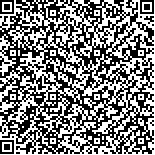| 本文已被:浏览 1519次 下载 1783次 |

码上扫一扫! |
|
|
| 中国近海藻毒素及有毒微藻产毒原因种调查研究进展 |
|
梁玉波1,2, 李冬梅1,2, 姚敬元1,2, 金薇1,2, 宫长宝1,2, 刘仁沿1,2
|
|
1.国家海洋环境监测中心 大连 116023;2.大连市藻毒素重点实验室 大连 116023
|
|
| 摘要: |
| 麻痹性贝类毒素在我国近海污染问题已十分突出,基本呈现逐年加剧的趋势。20世纪90年代,南海麻痹性贝类毒素污染较重;21世纪初,北黄海麻痹性贝类毒素污染较重;近几年,渤海和福建近海麻痹性贝类毒素污染较重;可产生麻痹性贝类毒素的微藻有亚历山大藻和裸甲藻等。采用小鼠生物法检测我国近海腹泻性贝类毒素超标率32%左右,采用液相色谱/质谱法检测,仅有3起超标的研究报道;现行小鼠生物法检测腹泻性贝类毒素假阳性问题十分突出,应尽快废除;腹泻性贝类毒素均是脂溶性的,脂溶性海洋生物毒素在我国近海常年可检出,偶有虾夷扇贝毒素和鳍藻毒素超标现象。可产生脂溶性毒素微藻有鳍藻和原甲藻及网状原角藻等。失忆性贝类毒素在我国近海常有检出,但无超标现象;产毒微藻有拟菱形藻等。西加鱼毒素在我国南海污染较重,但毒素标准物质的匮乏,限制了西加鱼毒素的调查研究;至今尚未确定产生西加鱼毒素的微藻。酶联免疫吸附法和液相色谱串联质谱法相结合已成为藻毒素快速准确检测成熟的技术,逐渐代替小鼠生物法和液相色谱法。 |
| 关键词: 中国近海 藻毒素 有毒微藻 毒素检测方法 |
| DOI:10.11693/hyhz20181000233 |
| 分类号:P714+.5 |
| 基金项目:国家重点研发计划资助项目,2017YFC1404303号,2016YFF0201104号;国家自然科学基金,41576120号,41276099号 |
|
| PROGRESSES IN INVESTIGATION AND RESEARCH ON PHYCOTOXINS AND TOXIC MICROALGAES IN THE COASTAL WATERS OF CHINA |
|
LIANG Yu-Bo1,2, LI Dong-Mei1,2, YAO Jing-Yuan1,2, JIN Wei1,2, GONG Chang-Bao1,2, LIU Ren-Yan1,2
|
|
1.National Marine Environmental Monitoring Center, Dalian 116023, China;2.Dalian Phycotoxins Key Laboratory, Dalian 116023, China
|
| Abstract: |
| Phycotoxins and toxic microalgae have been investigated since early 1990s in coastal waters of China. Paralytic shellfish poisoning (PSP) pollution has been increasing year by year, which seriously harmed the coastal waters in South China Sea in 1990s, in the northern Yellow Sea in early 2000s, and in the Qinhuangdao and Fujian recently. PSP had been found produced by toxic species of genus Alexandrium and Gymnodinium catenatum. Diarrhetic shellfish poisoning (DSP) in the coastal waters of China has been increasing and about 32% of the samples exceeded the safety benchmark determined by mouse bioassay but only three cases were detected by HPLC and LC-MS/MS methods. Therefore, mouse bioassay for DSP test in China produced obviously false positive results and should be repealed. Lipophilic marine biotoxins have been detected in the coastal waters of China in all seasons, and the levels of yessotoxin (YTX) and dinophysistoxin-1 (DTX1) were occasionally reported high beyond the safety point. The lipophilic toxins have been found produced mainly by toxic Dinophysis spp, Prorocentrum spp. Azadinium spp. Protoceratium reticulatum, and Vulcanodinium rugosum. Domoic acid (DA), the main component of amnesic shellfish poisoning (ASP), had been confirmed secreted from diatom Pseudo-nitzschia simulans that frequently occurred recently in the coastal waters of China but remained within the safe level. Recently, ciguatera fish poisoning (CFP) polluted seriously the coastal waters of South China Sea but no microalga has yet been found to produce the toxin. The ELISA and LC-MS/MS methods for detecting marine biotoxins have become mature methods and expected to replace gradually the MBA and HPLC methods in China. |
| Key words: coastal waters of China phycotoxin toxic microalga toxins detection method |
